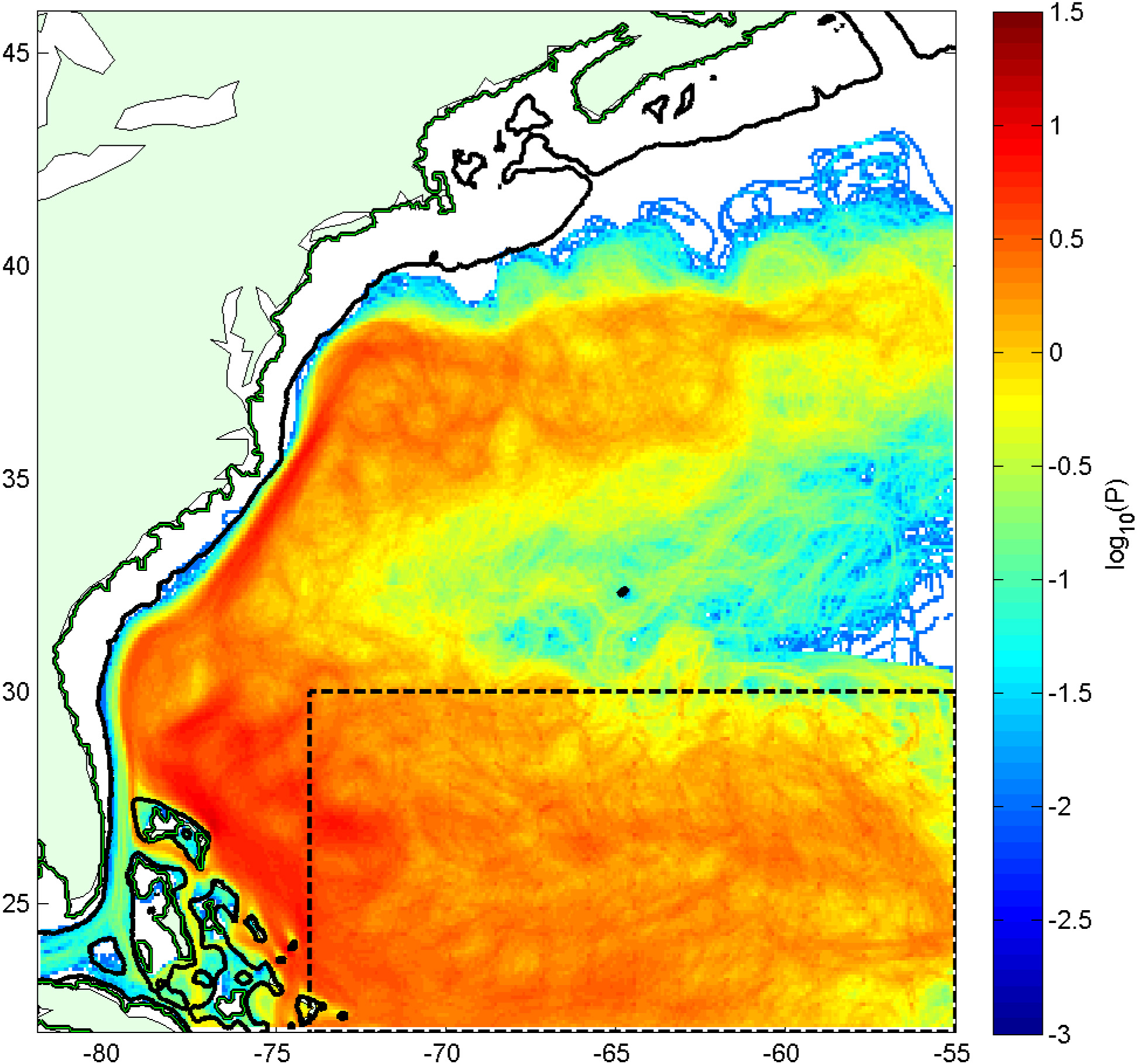Research
Applications of Chaos Theory in the Ocean
Mixing is an important consideration in the understanding of how properties such as heat and oxygen are transferred down from the ocean surface, or how nutrients are brought up from depth. Harmful algal blooms can be locked to such processes. In work with colleagues Irina Rypina and Tamay Ozgokmen, I use chaos theory to try to understand these processes as they might act in an ocean eddy.
Deep Circulation, Overflows, and Canyon Flows
The ocean is naturally divided into deep basins and there are currents of dense water that flow around and between them.
Biophysical Modeling
Most fish and benthic-associated invertebrates use a reproductive strategy involving the spawning of hundreds to millions of eggs that hatch into small and vulnerable planktonic larvae.
Microplastics in the Ocean
Microplastic particles are found everywhere: in beer, human breast milk, snow, bottled water, and virtually every part of the ocean. WHOI has a microplastics group that meets monthly to discuss the physics, chemistry and toxicology and other aspects of microplastics in the ocean. A few of us, including my colleague Irina Rypina, are particularly interested in how plastics are transported by ocean currents and whether they accumulate in certain areas. The attached video shows a simple example of a set of attractors, set up by swirling currents that mimic the circulation in an ocean eddy. Predictions of where attractors exist could guide observational surveys and ultimately might guide efforts to filter plastic particles from the ocean.
Research
Applications of Chaos Theory in the Ocean
Mixing is an important consideration in the understanding of how properties such as heat and oxygen are transferred down from the ocean surface, or how nutrients are brought up from depth. Harmful algal blooms can be locked to such processes. In work with colleagues Irina Rypina and Tamay Ozgokmen, I use chaos theory to try to understand these processes as they might act in an ocean eddy.
Deep Circulation, Overflows, and Canyon Flows
The ocean is naturally divided into deep basins and there are currents of dense water that flow around and between them.
Biophysical Modeling
Most fish and benthic-associated invertebrates use a reproductive strategy involving the spawning of hundreds to millions of eggs that hatch into small and vulnerable planktonic larvae.
Microplastics in the Ocean
Microplastic particles are found everywhere: in beer, human breast milk, snow, bottled water, and virtually every part of the ocean. WHOI has a microplastics group that meets monthly to discuss the physics, chemistry and toxicology and other aspects of microplastics in the ocean. A few of us, including my colleague Irina Rypina, are particularly interested in how plastics are transported by ocean currents and whether they accumulate in certain areas. The attached video shows a simple example of a set of attractors, set up by swirling currents that mimic the circulation in an ocean eddy. Predictions of where attractors exist could guide observational surveys and ultimately might guide efforts to filter plastic particles from the ocean.

![Fig.I4a [Converted] Locations of Major sills in North Atlantic Ocean](https://www2.whoi.edu/staff/lpratt/wp-content/uploads/sites/120/2019/06/Fig.I4a_133297.jpg)
